
Published:
Readtime: 48 min
Every product is carefully selected by our editors and experts. If you buy from a link, we may earn a commission. Learn more. For more information on how we test products, click here.
Australian rugby is in dire straits and there is serious doubt whether the game can survive in its current form. So I started writing down some thoughts on how to fix rugby in Australia and got a bit carried away…
This story was republished from Medium with permission by Jeremy Atkin its original author.
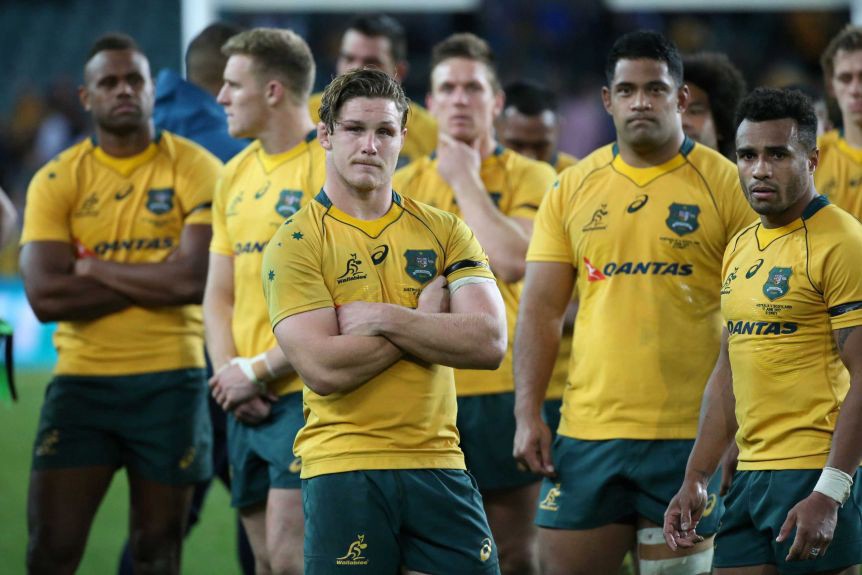
1. The State of Play
Behind the Scoreboard
From a Financial perspective:
Operating costs have grown and the three primary revenue streams are all under pressure:
- Broadcast revenue (because overall TV ratings and in particular rugby ratings are down and so is advertising spend)
- Ticket sales (because match attendances have dropped)
- Sponsorship (because fans are turning away from rugby and key partners such as Qantas have been smashed by COVID)
From a Fan’s perspective:
- Both Super Rugby and the Rugby Championship have become stale, the calendar lacks logic and there is no meaningful link between the grassroots and the Wallabies.
From an Organisational perspective:
- There is no evidence of alignment and little capacity for effective decision-making or strategic planning.
Plotting a Second Half Comeback
All is not lost, however. Regardless of how bad things seem, rugby isn’t going away. Schools and clubs will continue to play, Wallabies will continue to wear gold jerseys and fans will continue to argue on Twitter. There are three concrete factors that give confidence in rugby’s resilience and potential:
- While small, the Australian rugby community is very passionate
- Rugby continues to have support amongst Australia’s corporate heavyweights
- Internationally, rugby is booming
Plan of Attack
To survive, Australian rugby needs to solve three problems:
- Balancing the books
- Re-engaging fans
- Re-structuring how the game is organised
None of these problems is insurmountable, but they do require a plan that addresses all three, rather than just focusing on one and hoping the others take care of themselves. I’ve laid out what I would do across nine posts, breaking down the key issues and proposing a range of solutions:
Balancing the Books:
- Reducing the cost-base
- Protecting and growing revenue
Re-engaging Fans:
- Fixing the calendar
- Winning more games
- Fixing the game itself
- Overhauling media strategy
Organisational Re-structure:
- Overhauling governance model
- Strengthening ties within the game
- Encouraging private ownership
Relatively little of what I am proposing is original — it’s an integration of lots of ideas that are already being discussed. What I do think is unique is that most people are focused on fixing specific issues within Australian rugby, and none present a holistic view of how all the different bits and pieces might fit together. Hopefully, what I’m proposing fills this void.
My solution is by no means perfect, and I’d love to hear criticisms, so please have a read, give it some thought and let me know what you think — starting with how to reduce operating costs.
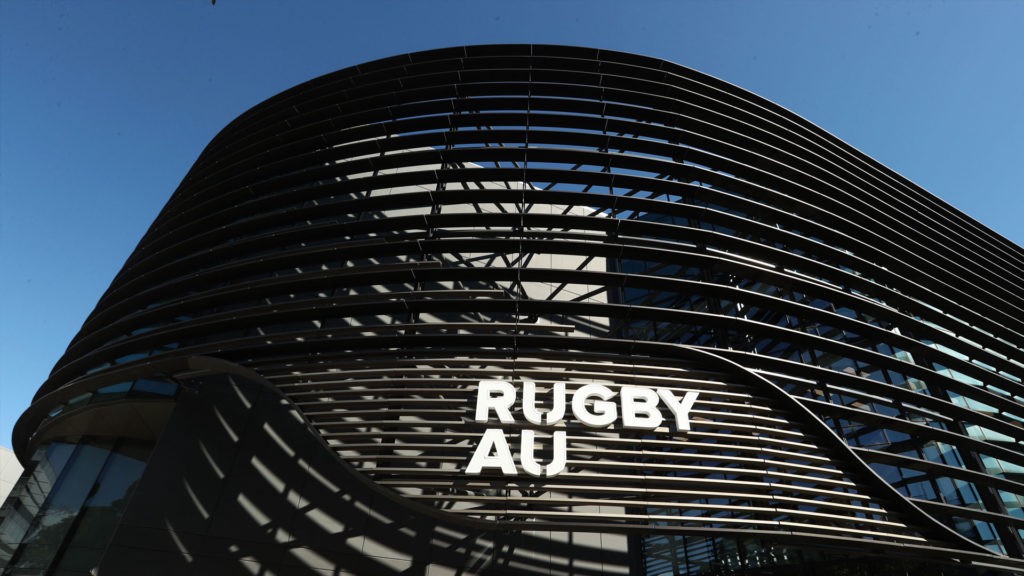
2. Reduce Operating Costs
For rugby in Australia to survive, it needs to cut costs. Given the deterioration in the media landscape and the game’s waning popularity, revenue will decline and cuts are necessary to balance the books.
Rugby Australia’s current operating budget is $80m (excluding the $30m paid to the Super Rugby franchises) and the four Super Rugby franchises have the annual expenditure of roughly $20m each for a total spend of about $160m per year. Taking the dual mindsets of “desperate times call for desperate measures” and “never waste a good crisis” — I am setting myself a goal of reducing this by 50% — i.e. $80m.
Step 1: Eliminate a Layer
Anyone who has done corporate ‘transformation’ projects knows the easiest way to find ‘efficiencies’ is to reduce the layers in the middle of the system. In most organisations, this means reducing middle-management headcount, in the case of Australian rugby it means scrapping Super Rugby altogether.
The current format isn’t delivering for the Wallabies, it’s not delivering for fans and it’s not delivering commercially. Rather than performing complicated reconstructive surgery, the better solution is just to get rid of it altogether. Of the $80m spent by the Super Rugby clubs, about $22m is player payments so assuming for a moment that you don’t touch the players at all, the pool you’re looking at is $58m.
You could assume that you just take these costs out altogether but even in my structure you do need some infrastructure at the state level (especially for coordinating grassroots etc.) so I’ll assume a saving of $50m which leaves $8m to be spread out among the state bodies.
We also pay $1m to SANZAAR central funding which doesn’t make a lot of sense with no Super Rugby and no Rugby Championship (I’m scrapping that too) so that can go as well.
Step 2: Pay Fewer Players
Current
Of the ~195 professional rugby players in Australia, about 150 are aligned with the four Super Rugby teams — 36 to 40 for each. Extrapolating from the various annual reports, it appears the total cost of employing these guys is ~$38m annually — a bit over $250K each which seems about right.
Options
To get this number down there are only two options — pay each player less or employ fewer players. The first option doesn’t work without accelerating the player drain to Europe and Japan but employing fewer players means supporting less professional teams so what do you do? The question is answered above — you cut the Super Rugby teams and pay fewer players.
Solution
Cut the number of contracted players down from 150 to 50, structured as follows:
- 25 contracts for the most valuable players (Wallabies Contracts)
- 25 contracts for the players aged 23-and-under deemed to be the most promising (Junior Contracts)
- All contracts are for fixed pre-set values and for a fixed period of 3 years, awarded on a rolling-basis — i.e. 8 of each contracts awarded each year
- Wallaby Contract Values : 6 x $1m, 6 x $900K, 6 x $800K, 7x $700K (all per annum) = total cost of $20.4m
- Junior Contract Values: 6 x $200K, 6 x $190K, 6 x $180K, 7x $170K (all per annum) = total cost of $4.4m
- Total player cost of $26 million-plus another $3m or so in match fees for a saving of ~$9m
I’ll fully explain the logic for this in another post but it boils down to paying more to attract the best young talent, keep the best players in Australia year-round and letting everyone else fend for themselves. It obviously means a lot less professional rugby players in Australia at any given time but changing the competition structure and eligibility rules hopefully mean this doesn’t impact either the product for fans or the success of the Wallabies.
Step 3: Trim the Fat
Somehow, Rugby Australia manages to spend close to $19m between “Wallabies team costs” and “high performance and national teams”. I would love to see a breakdown of these costs because this seems ridiculous. If you assumed a staff of 10 ‘rugby staff’ on an average of $400K plus $100K in costs per person and costs of $100K per contracted player, that still only gets you to $10m. Where does the other $9m go? It goes in the bin — another $9m in savings.
Step 4: Outsourcing
I am going to say up-front that I don’t know too much about how any of these functions truly operate other than to say that every single thing I have read regarding the current financial state of Rugby Australia says that head office is bloated and this is reflected in the matchday and corporate cost lines which together come to ~$26m.
One simple solution could be out-sourcing. Instead of having an in-house matchday operations team, why not outsource to a specialist event-promoter like TEG? Instead of having an in-house sponsorship sales team, why not outsource to a specialist rights commercialisation agency like GroupM or IMG? We already seem to outsource a lot of the rights negotiation so why not outsource the other commercial functions to people who do this stuff for a living.
You’d need to structure the deals the right way to align the incentives but very basic economics tells you that putting specialists in charge leads to better outcomes and at a minimum you’d dramatically reduce the fixed cost-base. Operating under this out-source model could save you another $10m easily.
Some combination of these two steps seems to have already been completed with the recent round of cost-savings at Rugby Australia so it will be interesting to see what (if anything) the consequences are.
Summary of Savings
- Super Rugby —$50m
- Player Costs — $9m
- Rugby Costs — $9m
- Admin Costs — $10m
- SANZAAR payment — $1m
- Total — $79m
So not quite the achieved goal of $80m but pretty close and a much smarter and leaner operating model for Rugby Australia. Cost is only half the problem though — maintaining and growing revenue is every bit as important and is tackled in the next post.
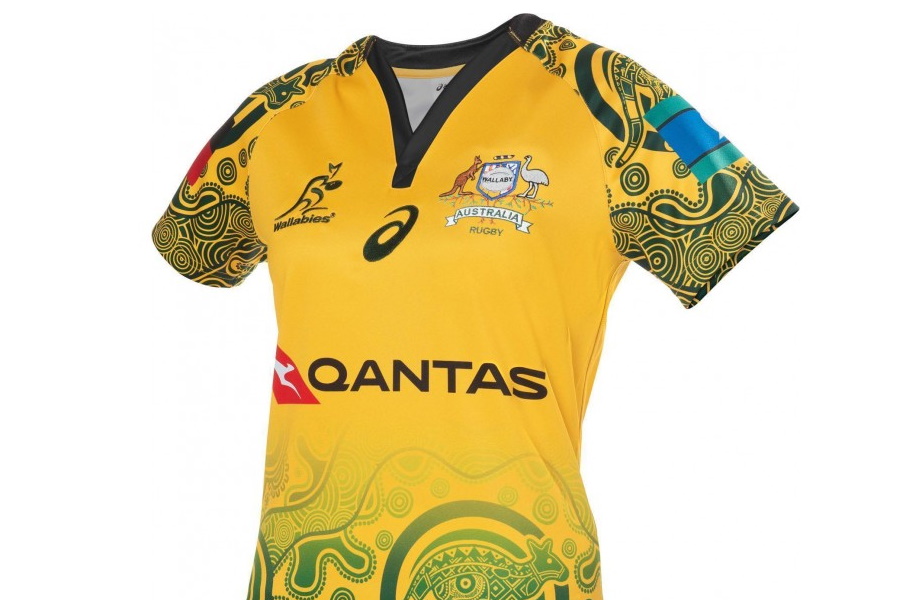
3. Protect Revenue Streams
In the previous post, I discussed how Rugby Australia can shrink its operating costs. This post will look at the other side of the coin — how RA can protect their existing revenue streams and grow new ones. Looking at RA’s annual reports, there are three primary revenue lines: Broadcast rights (51%), Matchday (17%) and Sponsorship (23%) with a couple of other bits and bobs thrown in so that how I will tackle it.
In summary, less is more.
Broadcast Rights
You would think that cutting Super Rugby makes the broadcast package much less attractive but I’m not sure this actually the case due to two trends which are shaping the TV landscape:
- Like many other industries, the TV landscape increasingly resembles are barbell. Content has value if either (a) it’s cheap to make and there’s lots of it (e.g. game shows and reality formats like Border Security) or (b) it draws a really big audience (e.g. The Superbowl). Anything in the middle is increasingly uneconomical.
- Niche content that appeals to relatively few people but inspires a passionate response (like anime, horror movies etc.) is increasingly valuable as its easier than ever to get people to pay for stuff they love.
Both of these trends suit Australian rugby pretty well. Super Rugby is the content in the middle getting squeezed but that’s fine, we’re cutting it anyway. There is a heap of club rugby which can be secured relatively cheaply (especially if you package it up with club competitions from around the world) and fill out content hours on a subscription service. And there is the potential to play a handful of games a year (e.g. Bledisloe and interstate) that draw big ratings that appeal to advertisers. It’s really just a matter of getting the packaging, messaging and promotion right.
Rugby fans also over-index on both passion and disposable income so the trend towards subscription-funded niche content works in rugby’s favour as well. The only way that losing Super Rugby really hurts you is if there are a heap of subscribers out there (including all the ex-pats) who value Super Rugby way more than they value the next level down and decide to cancel their subscriptions. Consider me sceptical.
Don’t get me wrong, the pain being felt by all the broadcasters means that the next rights package will be worth significantly less than the last one but I don’t think losing Super Rugby will be the reason.
Matchday
As above, I don’t think playing less ‘professional’ games really hurts too badly.
At present, there are roughly 40 professional rugby events in Australia every year — 8 home games for each of the four Super Rugby franchises, six or seven Wallabies tests and the Sydney Sevens. Given the significant fixed costs in opening the gates of a footy stadium and the low average crowd, few of these 40 games would make much of a profit. On the other end of the scale, each additional fan that comes through the gate costs you basically nothing so a Bledisloe game with expensive tickets at a packed Perth Stadium does very well.
The model I’m proposing leans heavily into this logic. Rather than 40 major events, I’d have 23 — The Sydney Sevens, ANZAC Day, fifteen interstate games, and six home Wallabies games. The hope would be that the significant decrease in supply, means higher average crowds, so while revenue will likely decrease, profitability should increase. An important part of getting this right is making sure the games are played in stadiums that fit the crowd. Nothing kills the atmosphere of a live sports event like a 3/4 empty stadium so if / when the new Sydney Football Stadium opens it’s probably time to say goodbye to Homebush forever. It’s a long way from the core supporter base, it’s not a great viewing experience and it’s never full so the atmosphere is usually lacking — not exactly factors that get people rushing back.
Sponsorship
Again, cutting Super Rugby significantly reduces your sponsorship assets so some thought needs to be given as to how you fill the gap. The answer is bundling. Rather than every individual rugby club and every individual rugby competition in the country having their own sponsorship deals which are sold by volunteers and bought by local businesses, why isn’t the whole lot bundled up and sold together as a ‘whole of game’ package?
A national consumer brand like Woolworths would get enormous value out of sponsoring every amateur and junior footy club in the country (and linking with their local store) as well as sponsoring the Wallabies. It would allow them to combine both local and national messaging, give them heaps more content to work with and a much stronger overall message. I’m not sure why this has never happened before?
Other
Memberships
One thing that stands out when you look at RA’s revenue is how little of it comes directly from fans. It’s just ticket sales from fans and everything else is B2B. The split is something like 85:15. This stands out, especially when you consider the general movement in the media landscape towards transacting directly with customers (Disney, Netflix etc.).
The most obvious option for RA to generate money from Australian rugby fans is some sort of membership. Best bet would be to include access to local club competition, merchandise, preferential access to tickets to marquee games and exclusive media content of some description. Around the world, sports memberships are becoming less about tickets and more about belonging and identity and without an existing revenue stream to cannibalise, rugby has a chance to capitalise on this
Licensing & Merchandise
Little Johnny Howard made the Wallabies tracksuit famous but it, and the concept of Australian rugby kit, have faded very much from the public consciousness. I would bet that most Australian rugby fans have a jersey from sometime in the 00s and haven’t bought anything new in the past five years or more. I don’t know exactly what the plan would be here but the fact that the only piece of Wallabies kit I’ve bought or been given in the past two decades is a pair of budgy smugglers clearly points to a missed opportunity.
Summary
Given the dramatic reduction in games that my model assumes, success hinges entirely on making what’s left compelling — trading down on quantity and trading up on quality. This all relies very much on making the on-field proposition more attractive and so that’s of the next post.
4. Fixing the Calendar
The current Australian rugby calendar is a mess. Rather than having a clear and logical structure, it’s a patchwork of competitions overlapping throughout the year and overwhelming all but the most committed fans. My proposed alternative is built around four guiding principles:
- Emphasise quality over quantity
- Eliminate overlap between competitions
- Build logically throughout the year, starting with club footy and culminating with the Wallabies
- Accept the reality of Northern Hemisphere club competitions and work around them rather than competing with them
Summary
The primary change to the calendar is the increased emphasis on club rugby with Super Rugby being scrapped and replaced with a dramatically shortened provincial competition.

Club Rugby
While transitioning to a national club competition makes sense over the medium-term, the city-based club competitions (i.e. Shute Shield, Hospital Cup etc.) have been going well in the past couple of years so there’s a risk in ripping them up. My proposed format would be a thirteen week season running from the middle of March through until early June. This would consist of 11 round-robin games followed by a four-team two-week finals series. Ideally, you would also force alignment between the ‘premier’ and sub-districts competitions in each city to enable promotion-relegation to first division subbies and then all the way down from there.
Shortening the season and introducing promotion and relegation would ensure that every game mattered and putting the finals in June which is otherwise a relatively quiet part of the year for sport would mean more attention.
The bigger change though would be playing club rugby in ‘clear air’ and sending all fifty centrally-contracted players to play for their clubs. This will both elevate the profile of the competitions and create a really interesting dynamic of amateurs turning up on a weekly basis to test themselves against the best. Sure Samu Kerevi might tear up the Brisbane Club Competition on a weekly basis but that would still be pretty fun to watch.
It would also make Wallabies the most accessible elite sportsmen in Australia. Rather than playing behind a wall of security guards on cavernous stadiums, there would now be 25 Wallabies running around each week on suburban grounds that have kids on the field at half-time. This would do wonders for the players’ profiles and fans’ feeling of connection with the professional game.
Provincial Rugby
Unlike current model where Super Rugby is the ‘core’ professional product, I would return provincial rugby to its representative roots with five teams representing the rugby playing states NSW, QLD, ACT, VIC, WA and a Barbarians team made up of overseas-based players / any players left over from NSW and QLD. The tournament would run from mid-June to mid-July which is important because it commences after the completion of the European club season and would enable foreign-based players to play. Each domestic team would host three games with the Barbarians effectively on the road for five weeks. As with the Six Nations, there would be no final — first past the post.
Unlike Super Rugby, this streamlined format would ensure a consistent viewing experience with three games each weekend (Friday night, Saturday afternoon, Saturday night), a really simple competition format and the guarantee of an Australian winner. The timing in the calendar and the presence of overseas-based players would also make it a de facto competition for Wallabies jerseys which would provide additional interest.
This is similar to the 2020 model with a couple of key differences. It’s much more condensed, with 15 games in five weeks rather than 20 in ten. And there is no final — it’s first past the post.
The biggest difference is that these players won’t be contracted by provincial franchises. Instead, as with State of Origin, they would be representative teams, with players (and coaches) picked from their relevant competitions with the players reimbursed through match fees ($5k per game would equate to $25k for a months work).
An alternative option would be to condense ACT, VIC and WA into the one team and condense the tournament down from five weeks to three which would improve the standard of play and reduce the competitive imbalance but this risks further alienating the already estranged WA rugby fans (and their wealthy patrons) so is probably best to leave them in. If they get towelled up, so be it — could form part of a transition to a national club competition.
International Rugby
The mere existence of international rugby is our biggest competitive advantage relative to other Australian winter sports. Internationals should be rugby’s ‘core’ product and the focus of the annual calendar.
This is the case in Europe with the Six Nations being the focal point of the calendar but not so in the Southern Hemisphere where the Rugby Championship has largely failed to engage fans.
My proposed international calendar would run for four months and have three elements:
- Incoming Tour
- Lomu Cup
- End-of-season European Tour
1. Incoming Tour
This would be largely unchanged from the current model which gives exposure to the Northern Hemisphere teams who we only play rarely, provide a warm-up to the Lomu Cup and generate a positive financial return
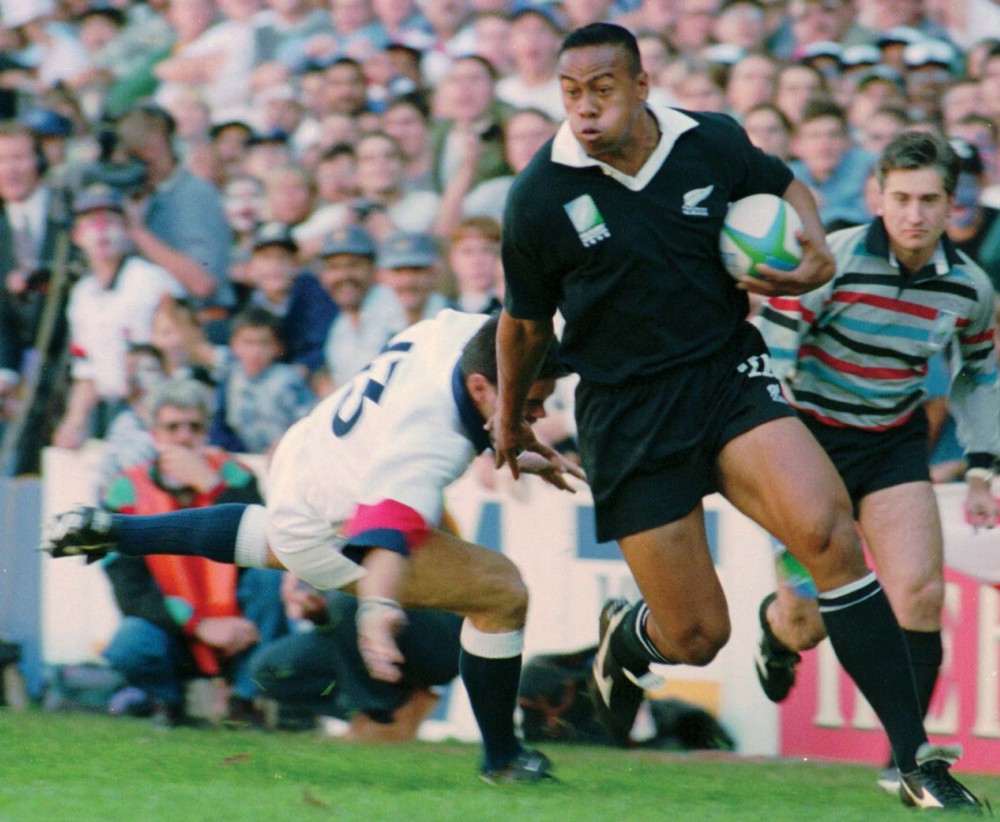
2. The Lomu Cup
Everyone talks about the flaws of Super Rugby, but the Rugby Championship is just as bad. Twelve games over eight weeks are not enough to sustain interest. Few games are close contests so the outcome is predictable. And the home-and-away format almost invariably leaves a heap of dead rubbers towards the end. It should be scrapped, and replaced with the Lomu Cup will run from August to October and become rugby’s marquee competition outside Europe. Unlike the Rugby Championship which only has four teams, the Lomu Cup will have twelve, split across two tiers with promotion and relegation of two teams every year.
Initial tiers:
- Tier 1 (Lomu Cup) — New Zealand, South Africa, Australia, Argentina, Japan and Fiji
- Tier 2 (Campese Shield) — USA, Tonga, Samoa, Canada, Brazil and Uruguay
Each tier will play a round-robin tournament (5 rounds x 6 games played each weekend) followed by a finals weekend held at a pre-determined neutral location. Lomu Cup matches to be hosted in competing countries while Campese Shield will follow a travelling model with each round hosted in a different location (i.e. round 1 has three games in Canada, Round 2 has three games in USA etc.).
At the completion of the round-robin phase last-placed finisher in the Lomu Cup is relegated and while top-placed finisher in the Campese Shield is promoted
The finals weekend would have four games as follows:
- Lomu Cup Final: LC1 vs. LC2
- Lomu Cup Relegation: LC4 vs. LC5
- Campese Shield Promotion: CS2 vs. CS3
- Exhibition: LC3 & LC6 vs. CS1, CS4, CS5 & CS6
This new format would triple the number of games played each week, make it less predictable, ensure every game had meaningful stakes, give more variety in opponent and ensure a climactic outcome. It would also bring the Pacific Islands into the fold and provide a realistic pathway for the continued growth of rugby in Japan and the USA.
If the tournament was a success (and why wouldn’t it be?), the finals would pretty quickly become the biggest weekend on the rugby calendar, generate huge crowds and could be auctioned off like Superbowl / Sevens World Series Final / Champions League Final to provide additional revenue.
3. European Tour
As with the incoming tour, this would be largely unchanged from the current format and provides a good chance to give younger players experience in European conditions. I would make selection only eligible to Australian-based players which would allow the overseas-based players to return to their clubs.
ANZAC Day
The only other addition to the calendar is an annual ANZAC Day fixture with New Zealand. I have seen others suggesting we should play a Bledisloe here but that would be totally out of sync with the rest of the calendar and doesn’t make a lot of sense. Instead, we should give a high-profile platform for our other national teams that currently lack a spotlight. I’d play five games at a single venue starting at lunchtime and concluding in the evening with hosting switching back and forth between the two countries each year. The games would be:
- Classic Wallabies vs. Classic All Blacks
- Women’s 7s
- Junior Wallabies vs. Junior All Blacks (U20s)
- Men’s 7s
- Wallaroos vs. Black Ferns
It wouldn’t necessarily pack out a stadium but it would draw a pretty good crowd (e.g. at North Sydney Oval) and it would be perfect public-holiday background TV content because it would go all day.
In summary, this calendar would deliver on the strategy of less is more, show clearer linkages between the different competitions and put as much focus as possible on the international game — all of which would improve both fan engagement and commercial returns all the more so if the guys in gold jerseys can start winning some more games.
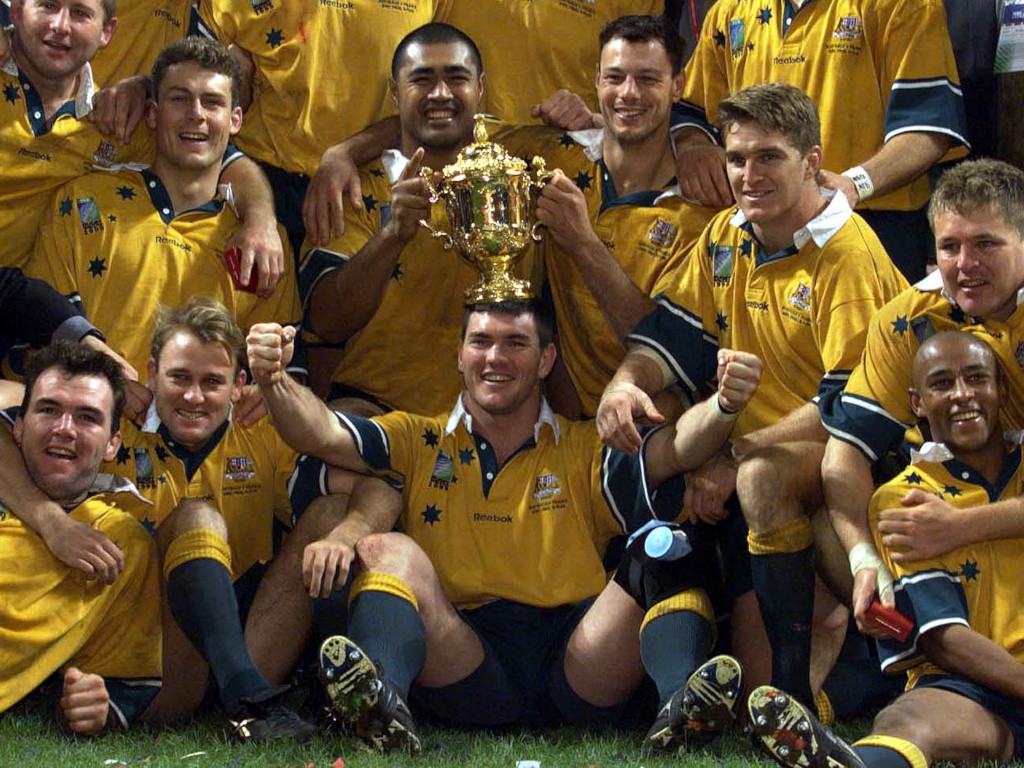
5. Winning More Games
The simplest fix for Australian Rugby will just be having the Wallabies win more games. Trophies in the cabinets strongly correlate with bums on seats and dollars in bank accounts so any plan for Australian rugby needs to answer how it’s going to make us win again.
Of course, simply saying ‘win more games’ is much easier said than done. How do you go about doing this in practice?
Players
The first thing you do is pick your best players. We’re not spoiled for choice so I’d scrap the Giteau rule and make it open slather. If you make yourself available from June through to October (i.e. outside the Northern Hemisphere club season) then you’re eligible. Will Skelton (28), Liam Gill (27) and Sean McMahon (26) are all enormously talented, in their peak playing years and they have less than 60 caps between them. That’s ridiculous. It would be one thing to turn our backs on these guys if we were winning everything. Very different story when we’re ranked 7th in the world and going backwards.
Would scrapping Super Rugby and abolishing the Giteau rule lead to a massive player exodus? Almost definitely. As noted in Part Two, the system would be designed to keep the top 25 players in the country and the top 25 juniors but beyond that, the players are left to fend for themselves. Some would certainly leave and go to France or Japan, make good money, improve as players and get some life experience. Some would probably end up in the NRL and some would go back to their clubs, play as amateurs and join the workforce. The question is not whether there would be an exodus. The question is whether it would actually be a bad thing?
The comparison people typically draw is with the Socceroos or the Brazilian soccer team but this is flawed for two reasons. Firstly, we’ve got enough money and good enough competition to keep a core group of players here year-round. Secondly and more importantly, even if they did all leave, we have a clearly defined annual international season which sees the best players playing in Australia for Australia so it’s not like they’ll be totally lost to the Australian public.
Performance
Based on my experience of watching and playing rugby, there are five factors that go into creating a winning team: Raw talent, Physical conditioning, Experience, Cohesion & Team Culture, and Mental Resilience. I’ve just made this framework up but I think it works so here is how I would approach each in my new system:
Raw talent
There is no I in TEAM, but there are five in INDIVIDUAL BRILLIANCE.
Finding and recruiting the best players is fundamental and yet somehow there is not a single person anywhere in Australian rugby who has this a job description. So that would be step one — put someone in charge and have them fly around the country watching club and school footy to find and recruit the best young players.
The goal here is not to find physical specimens and try to mould them into footy players. It’s the opposite. Find the best footballers and turn them into better athletes. With a couple of notable exceptions (e.g. Jonah), the greats of the game rarely dominate through pure physicality. Instead, they are good athletically and exceptional at reading the play, making the right decisions and executing their skills under pressure and fatigue.
Step two would be the contracting model I outlined in Part 2. Rugby needs to be competitive with the other codes in what it can offer to young players financially. Otherwise, instead of playing Bledisloe, they’ll be playing State of Origin.
Physical Conditioning
All of that said, rugby is still a physical game and the better conditioned the team is the better they’ll perform. This is one area in which reducing the number of centrally-contracted players probably helps. Rather than having 150 players scattered across the states all working to different strength and conditioning programmes, all 50 contracted players would now be under a centralised regime.
I would take this one step further as well and publish players’ testing results in terms of strength, speed, agility, endurance etc. This would allow people outside of the system (either because they are overseas or otherwise) to know what standards they should be trying to hit and it’d give the public insight into the work going on behind the scenes. People loved reading about the All Blacks ‘bronco’ results a few weeks ago so why don’t we see more of that?
Experience
When was the last time the Wallabies won a big game in bad weather? Or won a big game “playing ugly” like South Africa did against Wales in the World Cup semi-final? I honestly can’t even remember. The 2011 World Cup Quarter Final against the Springboks maybe? But I don’t even think the weather was that bad and even if it was, we won because Pocock single-handedly dominated them, not through strategic superiority.
The pool game against Wales in 2015 was pretty good as well but that was all about defence and didn’t have much to do with tactical nous. We have an inflexible mentality that “running rugby” is superior which just isn’t setting us up for success especially in big games and in bad weather.
This is where having international club experience as part of a standard rugby career trajectory is actually a huge benefit. A few seasons spent playing through the European will give our players way more exposure to these tactics and these conditions than they would ever get playing Super Rugby. Might we have won a few more games at Eden Park if our players had more experience in bad conditions? It surely wouldn’t have made it worse.
Resilience & Mental Strength
Leadership and ability to perform under pressure are intangible but hugely important skills. How do you foster them? Adversity. Taking players straight out of school and coddling them in professional academies for the duration of their careers fosters the exact opposite. Players are told where to be, what to wear, what to eat and what to say. They no longer have to think for themselves at all. And this tends to show on the field. If they’re in their comfort zone they can look like world-beaters but when they’re put under pressure they lack adaptability.
This is why I think it would be great for all of these guys to spend some time in club rugby. It may not be glamorous but getting smashed around at training by a disgruntled second-grader on a wet Tuesday night under poor lighting should be an important part of any rugby career.
Almost every great Australian cricketer from the past three decades was dropped at some point in their career. It was only after getting dropped and working their way back into the team that they prospered — I think there is a lesson in this for Australian rugby.
Cohesion & Team Culture
There is a school of thought that says cohesion, rather than skill or coaching or athleticism is the key driver of performance. Alternatively, others argue psychological safety and acceptance of vulnerability are the more important dynamics. Either way, there’s no doubt that culture is a key driver of performance.
On one hand, my proposals fly in the face of this because it disperses the players to their club teams rather than a smaller number of Super Rugby teams but on the other, I’m still talking about an international season that runs for four months so I don’t buy the argument that that’s not long enough. The QLD State of Origin team spent approximately six weeks together every year and that was plenty.
The thing that really kills teams is factions. It’s fine if not everyone is best buddies with one another but when there are two clear camps it can get pretty toxic pretty quickly. Rumour has it that this has been the Wallabies for the past few years with a rift growing between those of Pacific Island descent in the Wallabies camp and everyone else. Apparently, this existed before the whole Israel Folau saga but that can only have made things worse.
In terms of how you fix this going forward, I have no idea. Apparently this is one of Dave Rennie’s strengths so fingers crossed he gets everyone singing from the same song-sheet.
Other Ways To Win More Games
Beyond the ways to improve our performance listed above, there are two other ways to win more games which my system achieves albeit somewhat inadvertently.
Firstly, the new international calendar reduces the number of ‘hard’ games we play (i.e. against New Zealand and South Africa) and increases the ‘easy’ games by adding teams who we’d back ourselves to beat (initially Fiji and Japan). Also we’d effectively be playing for the Bledisloe in one-off tests every year which would definitely increase our chances of winning it every now and then.
Secondly, the biggest loser in scrapping Super Rugby would definitely be New Zealand. Their international dominance has been built on their Super Rugby dominance and if Super Rugby goes away, there’s good reason to think they’ll come back to the pack a bit.
One way or the other, improving on-field performance is an absolute non-negotiable for Australian rugby. Australians love a winner, so if we start getting some better results, it’s only a matter of time before people start to appreciate the game itself.
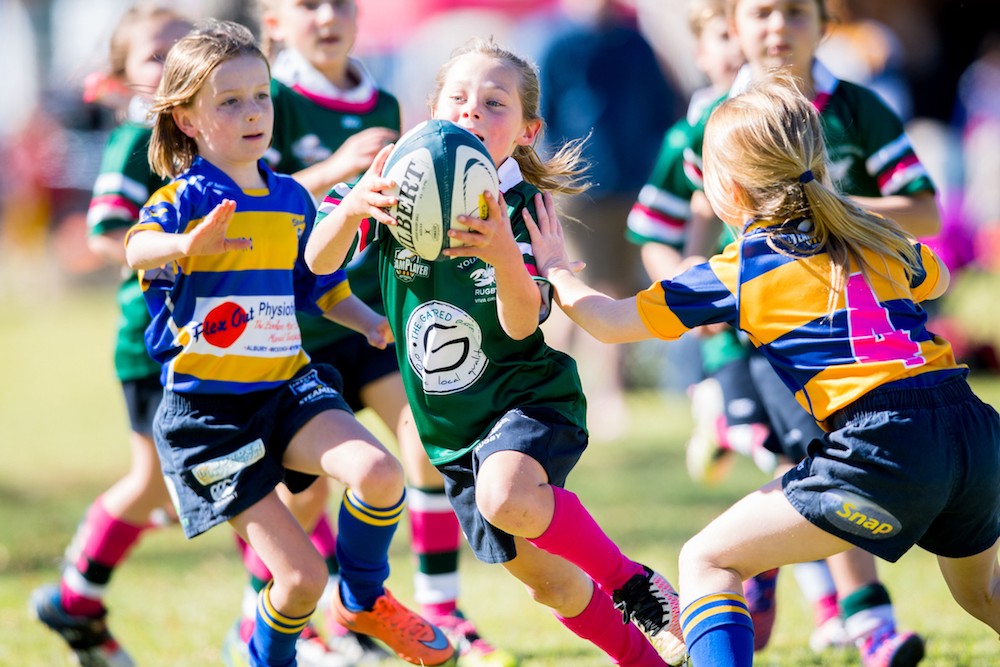
6. Fixing The Game Itself
Is rugby boring and over-complicated or is it nuanced and strategic? Is it slow and attritional or is it physical and intense? Is it dour like the South Africa vs. Wales semi-final? or is it amazing like the England vs. New Zealand semi-final?
Ultimately it doesn’t matter — Rugby Australia can’t just unilaterally change the rules. But they can still make rugby more popular. They just need to realise that rugby is an acquired taste. Like beer. Or coffee. Or vegemite. At first you wonder how anyone could possibly enjoy it but once you cross the threshold there’s no going back.
And the way you acquire the taste? Playing rugby. Grassroots participation doesn’t just build a pipeline of players, it builds a pipeline of fans. The easiest way to make rugby popular in Australia again is the Wallabies winning. Second is increasing junior participation.
How do you increase junior participation? You invest in it. You spend more money on people wearing shorts and less money on people wearing suits. And you make it easy for kids to see the path from where they are to where they want to be by making the Wallabies as accessible as possible — particularly at their local clubs.
The truth is, the game itself is not the problem. Everyone would more love tries, fewer rules and fewer stoppages but if rugby was really broken, then it would be struggling everywhere. It’s not. It’s booming. And the standard criticisms of rugby as a sport are refuted pretty comprehensively by the most successful sporting competitions in the world: rugby has way more scoring than soccer. It’s less complicated than American Football. It flows more than basketball and has more ball-in-play time than cricket or baseball.
One thing in rugby’s favour is that it all kinda looks the same. Club rugby is often better to watch than internationals. As a live sports experience, club rugby is just better than professional rugby. It’s cheaper, it’s easier to get to, you get a better seat, the food and drink are cheaper, better and quicker to get and you can run around the field at the end. This is unique to rugby — try flicking back and forth between the NBA and the NBL or between the Premier League and the A League. It’s chalk and cheese. This is something that rugby can capitalise on — but it requires the realisation that popularity can be built ground up — not just top-down. And it requires a media strategy that plays to rugby’s strengths rather than going head-to-head with league and Aussie Rules.
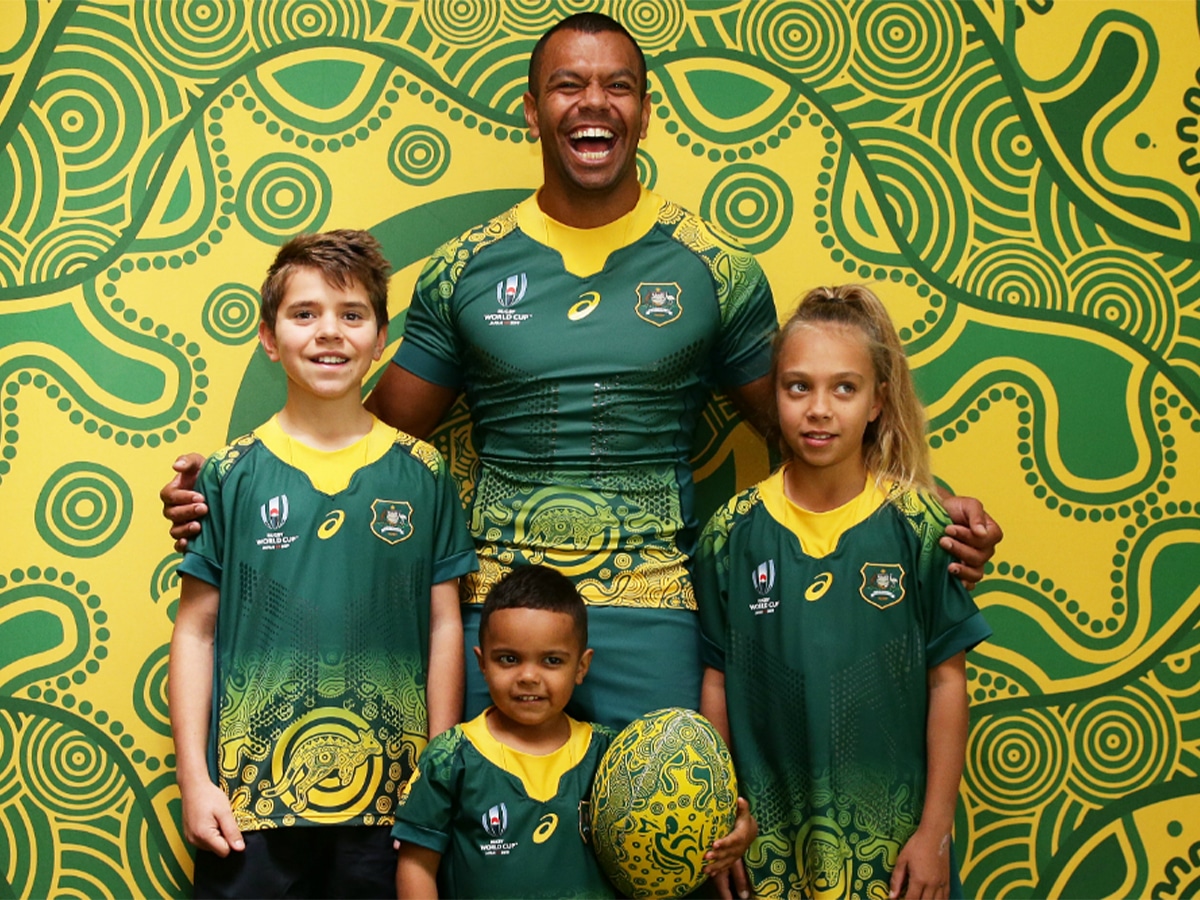
7. Media Strategy
A big part of Australian rugby’s problem is how it’s presented. The media landscape has been turned on its head in the past two decades, but rugby has barely changed. Meanwhile, the competitions that have thrived are the ones that have capitalised on the opportunities that the changing landscape have presented.
Lifting the Veil
Australian rugby needs to realise that the days of ‘controlling the message’ are over. It used to be the case that they only had to manage a small group of journalists, could construct the story they wanted to spin and keep everything else behind closed doors. Michael Cheika took this on as a personal challenge — deliberately shielding players from the media whenever possible and taking all the heat himself.
While the intent of this was admirable and it certainly ‘protected’ players from the media, it also kept them at arm’s length from the general public. For a team that represents Australia, it is remarkable how unknown the Wallabies are. Marika Koriebete won the John Eales medal as the best player in the country last year and even as a die-hard rugby fan, I know literally nothing about him other than he is Fijian and came from rugby league. I don’t think I’ve ever heard him speak.
Instead, much of the rugby content that appears in the media comes from journalists who seem to actively dislike the game (like Greg Growden) or those who shamelessly push a corporate agenda (like Jamie Pandaram). Far from ideal, especially in the face of the saturation coverage given to both the NRL and AFL.
All of this, combined with a string of bad performances, has seen rugby basically disappear from the public consciousness.
Step one of my solution would be to make the centrally-contracted rugby players the most accessible athletes in Australia. Give them training on public speaking and how to use social media and renegotiate the collective bargaining agreement to make media a part of their jobs. While there should obviously be guidelines on what is and isn’t acceptable to avoid another Israel Folau situation, they should be given broad scope to be themselves and express their personalities.
They should also be much more accessible to the rugby media. There are relatively few opportunities for journalists and ask players questions, with only one or two made available at any time. This should be easy to change. Why not make it open slather at the end of training? Get some varied stories out there rather than having six journalists reporting the same bland quotes. Much harder to ‘control the message’ but much more honest and much more interesting.
Along similar lines, Rugby Australia should put their contracted players out there as talking heads at every available opportunity. Get a player who’s into racing on TV giving tips at the spring carnival or one who is keen on fishing on a boat with ET. And there are definitely a bunch of players who are pretty devoutly religious — Rugby Australia should give them a platform to talk about it constructively rather than hiding it under the rug like some dirty little secret.
The same mentality should apply to the coaches. I would make Dave Rennie and Scott Johnson sit down for half an hour on alternating weeks throughout the year to talk about rugby on a revolving set of podcasts / vodcasts / whatever. It would give fans insight into what they’re focused on and how they see the game, It would also make them seem like real people rather than the 2D press conference quote machines that coaches can often become.
The pushback against all of this would be that it detracts from performance. That’s bullshit. There’s only so much training these guys can do in a week so there are plenty of spare hours. Just think about the time commitments that Lebron and Serena and Cristiano and the Fed manage to juggle. If they’ve got time then so does every single rugby player in Australia. It might even help. Constantly operating in an us vs. them siege mentality must be exhausting.
Beyond the Box
In addition to just generally making the players and coaches more accessible, there are all sorts of things Australian rugby can and should do to extend its presence in the media.
Highlights
Rugby Australia should become the Robelinda2 of rugby by employing a couple of junior staff just to cut highlights clips for social media. Not full highlights packages, just individual plays — using House of Highlights as a model. You’d probably never get to 17 million followers but churning out clips from every level of Australian rugby and of Australians playing overseas would cost very little and would keep rugby in people’s minds.
Additional Content
Rugby Australia should build up the elements around the game for additional content. There’s no trade window or draft or free agency, but a transparent annual contracting process would generate a lot of interest and debate. There’s no combine but publishing all of the players physical testing results would certainly generate interest. And with the calendar building logically through the year, there would be plenty of speculation as to who will get picked in what team.
A View Of The Future
There is a real opportunity to increase the profile of the junior players coming through. Every second schoolboy rugby hero has a YouTube highlights reel but they can get kinda lost in the system once they leave school. Making a bigger deal out of the junior players and then elevating the profile of the annual U20 World Cup would seem a pretty simple fix. If fans knew the players, they’d care way more about Australia vs. New Zealand U20s than the Stormers vs. the Sharks.
Go Deep
I’d love to read an in-depth player profile on every single Wallaby. This wouldn’t be expensive or hard to do. Just find your 50 favourite people producing rugby content in Australia (most of whom would be hobbyists), whether it’s podcasts or videos or blog posts or photographers or whatever and give them one player each and stagger them through the year. The results would be incredibly mixed but they’d still be super interesting to look. One of the most-read stories on rugby.com.au was a player profile on Ben McCalman and while by all reports he’s a great guy, it’s hard to believe he’s that much more popular than all of the current players.
The second place to go deep is into the game itself. There are plenty of armchair pundits out there doing in-depth rugby analysis on podcasts and YouTube channels but they’re hard to find. Someone at RA should be actively curating and promoting this stuff.
More Than a Game
The most popular sports leagues in the world almost all have additional interactive content that makes them more popular. March Madness has bracketology, the NFL has fantasy football, the EPL has FIFA and the Melbourne Cup would barely register without office sweeps and fashions on the field.
There are multiple things RA could and should try — fantasy rugby along the US model seems like an easy one — but the first and most obvious is to bring back Jonah Lomu Rugby. It was iconic in the mid-90s and could surely be revitalised as a mobile game pretty easily. Make it free to play and monetise it with advertising and / or micro-transactions to unlock classic jerseys, legendary players and post-try celebrations. Maybe update the graphics a bit but don’t touch the gameplay and especially don’t touch the commentary. Why hasn’t anyone done this already?
You Can’t Beat the Classics
I’d guess there are about 500 living Wallabies. I’m sure there are a couple that don’t really want anything to do with rugby anymore but I’d bet the vast majority would be more than happy to help out in whatever way they could.
A simple way to do this would be to have a classics Wallabies round of club footy and get as many of them down to their local clubs as possible. It wouldn’t be too much of a burden on the players, it’d reinforce the links between the grassroots and the Wallabies and it’d be a good story.
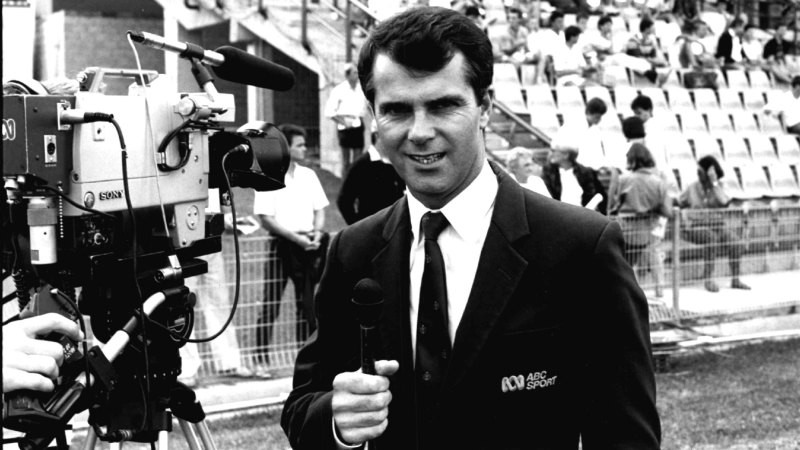
Television
Despite all of the opportunities identified above, TV is still the most important medium for sports and so making sure the calendar works as a ‘broadcast package’ is important. This is how I would divide everything up under my new calendar:
Free-To-Air — 48 games
One club game per week and finals (in Sydney and Brisbane only) (14 games), The interstate games (15), the ANZAC Day games (5), incoming tour games (3), Wallabies Lomu Cup games plus the final (7), the European tour games (4)
Subscription Games — 400+ games
Simulcast of all the free-to-air games (48 games), the remainder of the club games (110), the remainder of the Lomu Cup Games (32), Six Nations (15), U20 World Cup (30), Heineken Cup (70 games), European club games (200+), World Sevens Series (10 events)
How the games are broadcast is as important as how they are packaged and the TV presentation of rugby in Australia is dreadful. Gordon Bray has been a faithful servant but he’s been on the mic for 40+ years and it’s fair to say his schtick — yelling players names (“MATTHEW BURKE”) and giving obscure stats about them) — has grown more than a little tired.
Somehow the Fox commentary is worse. Like the dying days of the channel nine cricket commentary team, they’re little more than overpaid cheerleaders. There’s zero diversity of opinion, zero objectivity and zero insight.
It can’t get worse so there’s a license to experiment. Why not have a simulcast with one commentary stream for casual fans and one for die-hards. Or just study what other sports around the world are doing and shamelessly rip them off. We need our Tony Romo.
Summary
Not all of these things would work. And there are probably other ideas which are better. The point is that it’s time to experiment. The same tired presentation of rugby is not going to cut it and if a structural change is coming to Australian rugby then it should extend to how the game is presented. And also how the game is organised.

8. All Aboard
Australian rugby is an organisational clusterfuck. The fish rots from the head down and the malaise at Rugby Australia seems to start with the board. Not necessarily the people who sit there — I have no real insight as to how competent (or otherwise) they are — but rather who put them there.
Apart from a single vote that sits with the players’ association, the remaining board seats are held by the states. This is a holdover from the good old days when the game was amateur and there was no money to fight over. Instead, having the upper hand in the boardroom meant having the upper hand at the selection table and that was basically the whole game — getting more of ‘your’ players in Wallabies jerseys. Now the game is professional, there’s ample incentive for the states to push their own agendas which is why the calendar revolves around Super Rugby even though everyone can see isn’t working. This Super Rugby focus is actually entrenched in the governance model where not only do QLD and NSW get an extra vote for having a certain number of participants, they get a third vote for having a Super Rugby franchise.
My solution to this would be to totally re-design the governance model, dramatically weakening the states and re-distributing influence amongst rugby’s other stakeholders. My re-designed board would have each of the following bodies having a representative (and a single vote):
- Junior Rugby
- Women’s Rubgy
- Sevens Rugby
- Club Rugby
- Country Rugby
- Provincial Rugby
- Players’ Association
- Classic Wallabies (past players)
That is eight votes representing all the key stakeholders in rugby on equal footing. Throw in an independent chairman and you have a board of nine which is probably two too many but I’m not sure who to cut.
Importantly, in addition to better representing their constituents, board members should bring capabilities to the party. Ideally, you would want at least one board member with experience in each of the following areas:
- Finance / Accounts
- Law
- HR / recruitment
- High performance
- Media
- Marketing & Communications
- Sponsorship
Re-structuring the board according to the model outlined above would not be a trivial undertaking. It would require a total overhaul — less old boys, less Mosman and more of everything else. For that reason, it’s probably the least likely change to be implemented — after all the turkey never votes for Christmas. It’s absolutely necessary though. And it probably needs to be among the first things to happen.
How to make it happen? You’d need either a massive public uprising or an irresistible external force. I can’t imagine it’ll be the former, so fingers crossed for the latter. A more balanced governance model would enable better alignment, better decision-making and better outcomes.

9. A World In Union
Rugby’s smaller footprint should make it easier to organise than rugby league or Aussie Rules. Unfortunately, however, the opposite is the case and it’s dog’s breakfast all the way down.
In the Major Cities
Of all the gaps, the biggest (and strangest) is the one between ‘premier’ club rugby and the sub-districts competitions. As a simple example, Easts and Colleagues are about 100m apart in Woollahra and they have almost nothing to do with one another. This seems crazy.
The first fix would be realigned all the clubs in a city into a single structure that allows promotion and relegation all the way up and down. It’d make the competitions more interesting and prevent the current situation in which Penrith have been rooted to the bottom of the ladder for well over a decade.
Alternative, clubs in different competitions could form affiliations based on geography and allow players to be dual-registered. Easts could be affiliated with Colleagues, Sydney Uni could be affiliated with Petersham, Randwick could be affiliated with UNSW and so on. This is less compelling from an organisational perspective but would at least allow playing talent to balance out more naturally across the different competitions. Otherwise, you end up with a glut of talented players sitting on Sydney Uni 4th grade’s bench.
City / Country
The other linkage that could and should be significantly strengthened is with the bush. Every regional rugby club in Australia should have an affiliation with a club in their closest major city and which serves as a natural pathway for talented players. This should not be a one-way relationship though. All of the clubs would be obligated to play at least one home game per year in a regional town to ensure that the oft-forgotten regions get at least some access to seeing the best players run around. There doesn’t appear to be much downside to this and I know some of the clubs already do it so it seems like a bit of a no-brainer to make it a formal arrangement.
Thinking Global
Rugby Australia should encourage & facilitate relationships between Australian clubs and rugby clubs around the world. It would make a heap of sense for a club like Manly or Eastwood to have a sister club in each of New Zealand, South Africa, Japan, North America, and Europe. This might sound ambitious but I don’t actually think it’d be that hard to pull off.
No idea how you’d structure it (or if you’d even really need to) but the mutual benefit seems obvious. It’d give players and coaches on all sides the opportunity to travel and get a broader rugby experience and improve. Rather than spending the summer months sitting on a beach or toiling away in a gym somewhere, surely it would be better to be getting experience in European conditions and vice versa. If it makes sense for Manchester City to have a relationship with Melbourne City then surely it makes sense for Saracens or Wasps to have a similar relationship with Eastwood. Rugby Australia should be doing everything it can to make this happen.
It’s hard to quantify what benefits all of these linkages would bring but intuitively you’d think that they must be there. A fundamental problem with rugby is that it is all so disconnected. From the country to the city, from the juniors the seniors, from the amateurs to the pros and from one country to the next. Connecting these dots and presenting a unified front can only be a good thing and would make private ownership of the teams that much more appealing.
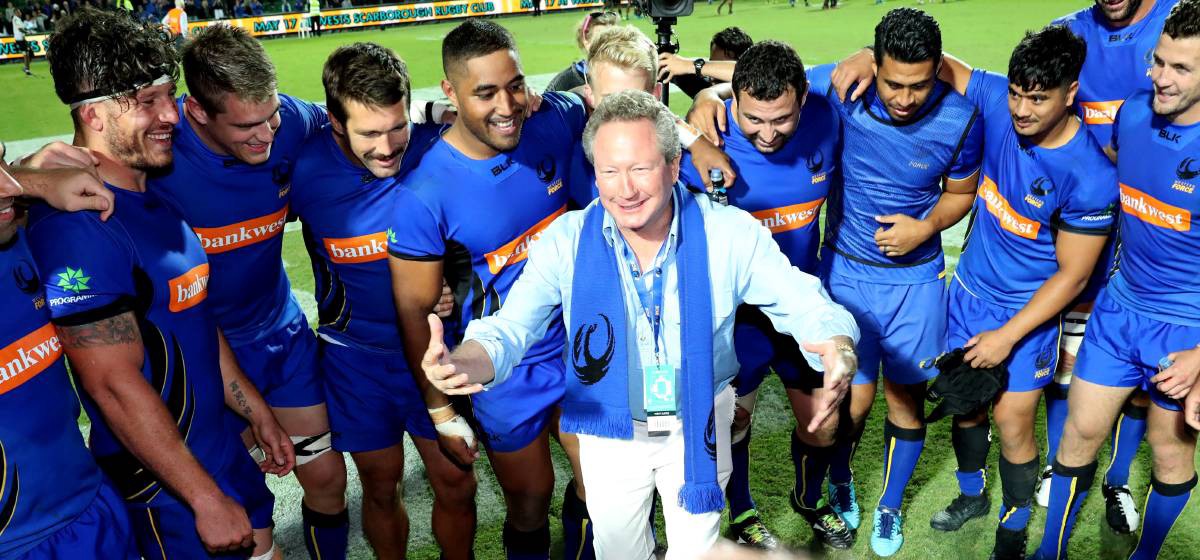
10. Skin In The Game
One of the few remaining things that rugby has going for it is that the remaining support it does have is in the best places it could be — rugby maintains a significantly wealthier fan-base than any of the other codes. This is true for the average fan and for the very-wealthy, and anyone who doubts either probably hasn’t ever been to a rugby lunch.
Unfortunately, other than buying Gold class tickets and paying for over-priced Foxtel subscriptions, these wealthy would-be benefactors / investors are largely locked out of the game. Instead at every level, the game is dominated by bureaucratic not-for-profit entities. This is a stark contrast to basically every successful sports league around the world, in which private ownership is standard operating practice.
And as happens pretty much whenever privatisation occurs, innovation follows. The most popular leagues are almost exclusively the ones that have private ownership, while those that don’t have been left behind. The English Premier League is by no means the “best” football league in the world in terms of quality but it is by far the most popular, putting ‘superior’ competitions like La Liga and the Bundesliga in the shade.
There’s definitely a clear appetite among the rich and powerful to be involved. A number already quietly pay the salaries of elite players through the “Australian Rugby Foundation” and Twiggy Forrest is so keen to invest in rugby his response to the Force being shut out of Super Rugby has been ploughing money into Global Rapid Rugby even though it about as an implausible a commercial model as you could conjure up.
It’s time to open the floodgates and finally — a fully 25 years after the game embraced professionalism — to embrace private ownership.
There are three ways that private investment in Australian rugby makes sense:
- Private ownership of the clubs. Rather than being wholly owned by their members — why not enable a blanket rule whereby some percentage of all of the clubs are open for private ownership. Give these rich dudes (and it is overwhelmingly men) a place to put their money, a place to go and feel important on a Saturday afternoon and something fun to chat about when they are playing golf.
- Private ownership of the competitions. In the same way that the Six Nations and the English Premiership have sold stakes to private equity funds, there is the potential to either do this with the Lomu Cup or the Ella Plate. The Lomu Cup in particular, with participation from the US, Japan and Canada and the prestige of the All Blacks and Springboks, could and should be worth a lot of money if executed effectively.
- Public ownership of Rugby Australia itself. Along similar lines to the Green Bay Packers, why aren’t fans allowed to own part of Rugby Australia? It is notionally a game for the fans and every man and his dog has an opinion, so why not let them put their money where their mouths are. As with the Packers or the various European soccer clubs that have similar models, there are of course professional organisational and governance structures put in place but in terms of ultimately who owns it, why should it be the states and not the public? And of course, it wouldn’t hurt that going down this road would raise some much-needed capital in the short term.
This feels like another area where there isn’t a great deal to lose. If it works, fantastic, if not and RA can’t find buyers on the terms they want then it’s back to the status quo. Nothing ventured. Nothing gained.
Jeremy Atkin is a Sydney-based consultant specialising in media, entertainment and sport.
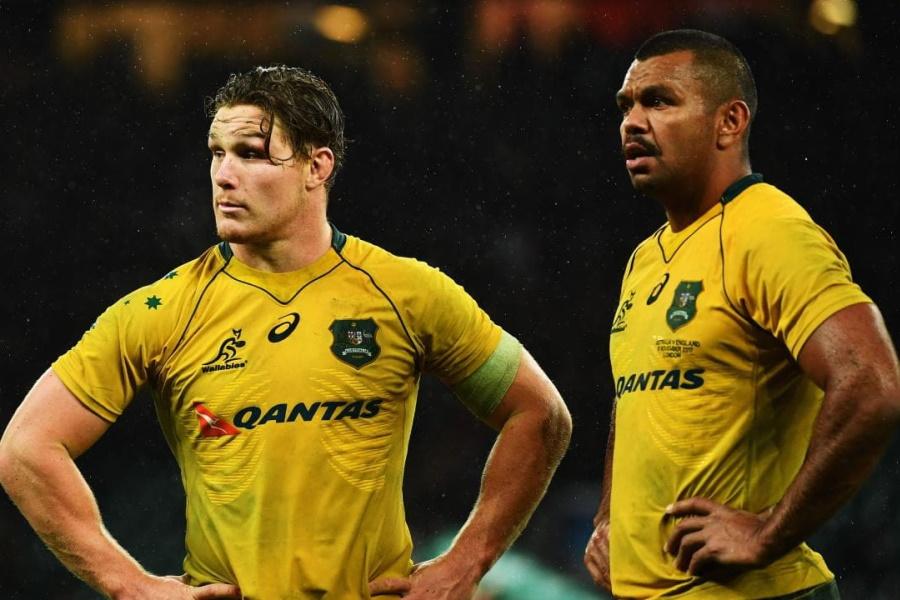



















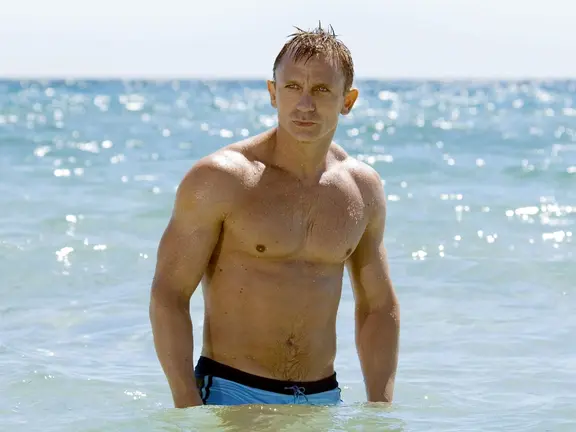
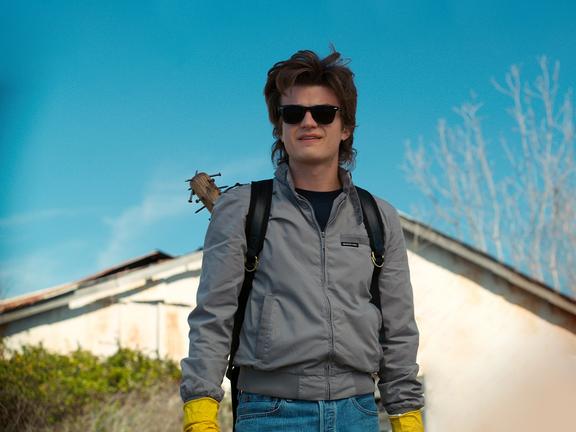









Comments
We love hearing from you. or to leave a comment.